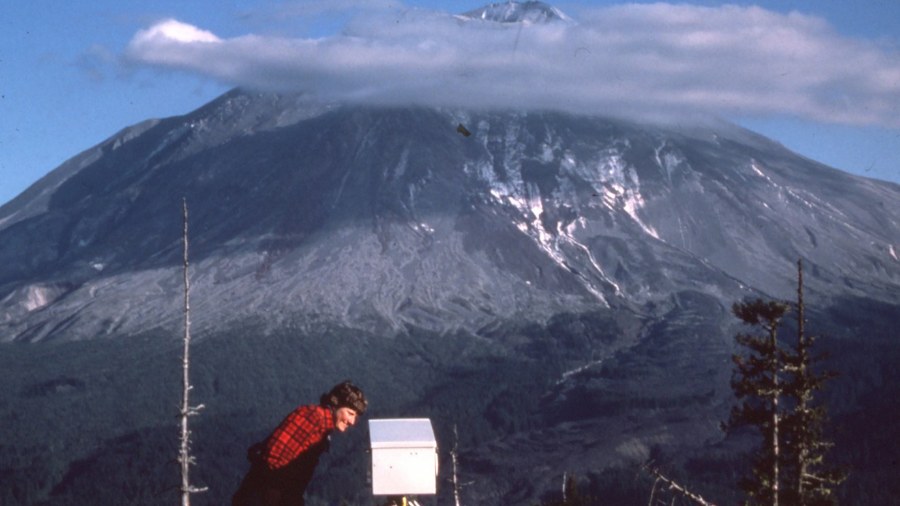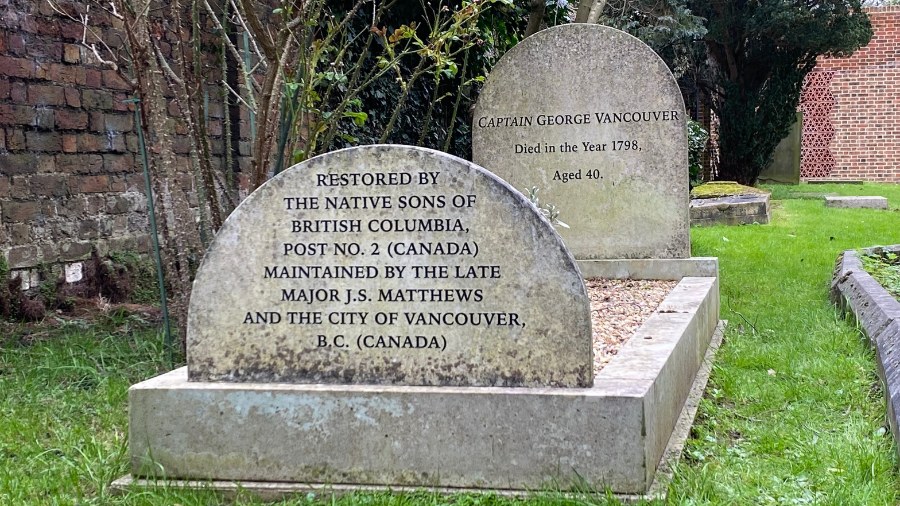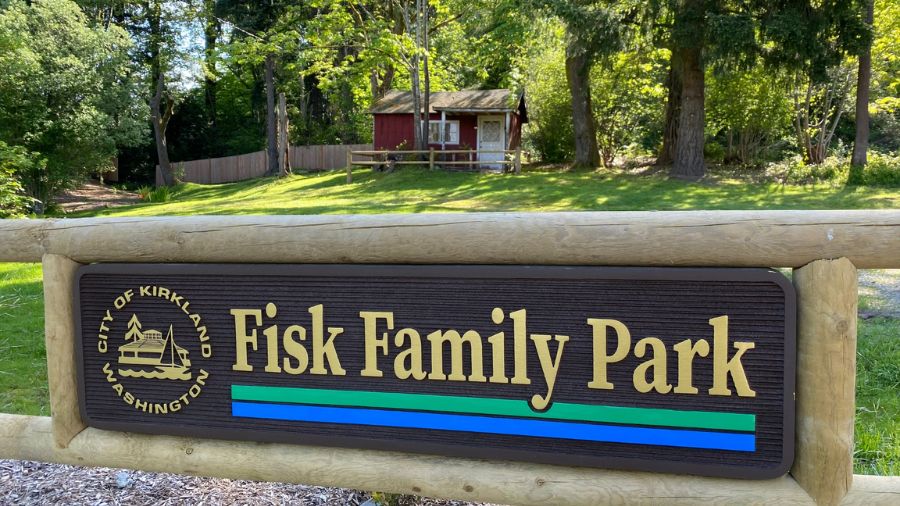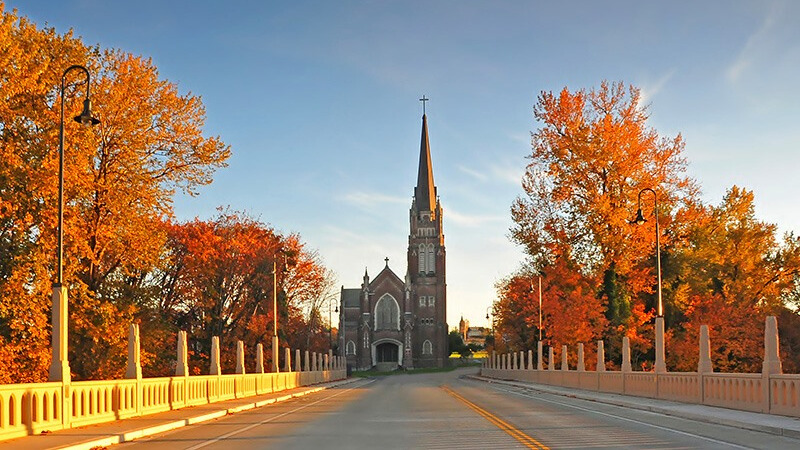‘Prairie Line’ walking tour revisits Tacoma’s 1873 win over Seattle in rail rivalry
Jul 5, 2023, 11:54 PM

Downtown Tacoma's history is woven into the railroad history of the Pacific Northwest and the United States, and light rail now travels near where the historic 'Prairie Line' was built by the Northern Pacific in 1873. (Feliks Banel/KIRO Newsradio)
(Feliks Banel/KIRO Newsradio)
July 2023 marks the 150th anniversary of one of the most momentous events in Pacific Northwest history: when the Northern Pacific Railway Company chose Tacoma as the terminus for its transcontinental line and doomed Seattle to obscurity.
That was what everyone thought would happen to Seattle, anyhow. But it didn’t exactly turn out that way.
A free history walking tour will take place next week in Tacoma on the actual anniversary over the “Prairie Line” – the final stretch of what was once the original Northern Pacific track into the heart of downtown.
The importance of railroads in the 19th century
Railroads are still important today, but their importance in the 1860s and 1870s when it came to stitching together the country economically and culturally can’t really overstate that.
President Abraham Lincoln signed the legislation chartering private companies to build transcontinental routes in exchange for land grants, or what amounted to tens of millions of acres of free real estate. For the Northern Pacific route, Lincoln signed the charter on July 2, 1864.
The business of building railroads in the 19th century is a complicated story. Construction on the Northern Pacific was slow and fitful and took years to get underway. Financing problems, labor issues and unanticipated difficulties along the route meant delays and increased expenses occurred. And construction didn’t just start from the east and head west; in order to not lose the federal charter and all that free land, an important segment of rail from the Columbia River to Puget Sound had to be built by Northern Pacific before the end of 1873.
More from Feliks Banel: ‘Momentous occasion’ on Vashon Island during World War II is reason to celebrate
And it’s this need to just get that stretch of track done, Sullivan said, which drove Northern Pacific to declare Tacoma the intended terminus on July 14, 1873.
“So we’ve got six months left, and the track had gotten as far as Tenino coming out of Portland,” tour guide and Prairie Line expert Michael Sullivan told KIRO Newsradio as he stood in Tacoma’s Tollefson Plaza. “That famous telegram to (Seattle founder) Arthur Denny and to (Tacoma founder) Matthew McCarver announced on the 14th (of July) that ‘we have located the terminus at Commencement Bay.'”
This was bad news for people in Seattle, including early settler and longtime civic leader Denny – and it arrived on a Monday, no less. He worked for years to attract a railroad to connect the city to the rest of the country to help boost the city’s future.
Many communities in the Washington Territory wanted to be the terminus, of course – for all the economic and other benefits – but upstart Tacoma was Seattle’s main rival. For Denny and others, the news must have stung.
Why Tacoma won
A lot has been made over the past 150 years about why Northern Pacific chose Tacoma over Seattle. Each city offered a number of concessions to entice the railroad – such as more free land and other sweetheart deals – not unlike recent civic battling witnessed in recent years for professional sports franchises, Amazon’s “HQ2,” or the odd Boeing plant.
Sullivan says the factors in Northern Pacific’s decision were, like the railroad business in general, complicated and opaque. It was definitely about the money and the timing – but mainly about Tacoma being closer than Seattle to Tenino. As mentioned, the federal charter required that by the end of December of 1873, Northern Pacific had to reach Puget Sound with a steam locomotive. By July, on the eve of the announcement, crews had built from Kalama on the Columbia River only as far north as Tenino, in Pierce County east of Tacoma.
“It was still a corporate startup that was running out of capital,” Sullivan said, describing Northern Pacific’s shaky financial ground in 1873. “And so that was just the practical fact (for) the quickest place to get to a deep water harbor. And they had to do it by December, they had six months.”
“Frankly, getting to Seattle was just not going to happen,” Sullivan continued. “It was a struggle as it was to even get to Commencement Bay by December. It was a nail-biter to the end, (and) everything that could go wrong seemed to go wrong.”
What went wrong included the financial Panic of 1873, which fueled labor disputes and inspired at least one armed standoff when workers demanded to be paid.
The Prairie Line
Sullivan’s free tour will start at Tollefson Plaza, off of Pacific Avenue, in downtown Tacoma. It will follow the 1873 route built by Northern Pacific – out and back for a total of about a mile along what’s always been known as the Prairie Line.
It’s called that, says Sullivan, because of the terrain the route crosses.
It comes “from Tenino through Roy, and then across the delta of the Nisqually River, and the prairie where Fort Lewis is today, which was prairie native people had kept that pretty well burned off,” Sullivan said.
“And so that was easy for railroad builders because they didn’t have to cut down trees that could just shoot across the prairie,” Sullivan continued.
“And it’s the route that’s still there today. Parts of it are now part of the rail-to-trail system, but you can actually follow the Prairie Line all the way to Tenino” on foot or bike, he said.
The rails are now gone and a wide path is there in its place. Much of the route and Sullivan’s tour cuts through the heart of the University of Washington-Tacoma’s campus, and there are all kinds of historic buildings and other artifacts to see not directly related to railroad history. The path follows a gentle grade through a remarkable assortment of Tacoma and Pacific Northwest history.
More from Feliks Banel: Memorial Stadium landmark nomination missing key history and context
And even taking in that gentle grade itself is like looking at the hands of a clock that mark a specific moment in what he calls “technology time” when it comes to railroad and locomotive design and construction.
If the Prairie Line had been built “five years before and the technology was not as good, the angle would have been would have had to be not as steep a grade,” Sullivan said, referencing the rapid development of more powerful locomotives in the late 19th century. “It would have had to be a gentler grade.”
Conversely, Sullivan continued, if the Prairie Line had been built “10 years later when the great powerful engines are developed to climb with through the Cascades, they could have practically climbed straight up the hill,” he said.
“But the Prairie Line marks that moment, that instant in time, that technological moment,” Sullivan said. “So (the route) is this wonderful, gentle diagonal” through the heart of downtown Tacoma.
Meanwhile, Seattle historians love to savor the 1873 Northern Pacific terminus story because it seems to say so much about the city’s grit and the determination of Seattle people to overcome what seemed in 1873 like a big setback. It has often said the “Seattle Spirit” – a hard-to-define, somewhat amorphous can-do civic attitude to adversity – was inspired by the telegram received that day.
The following May 1, a group of volunteers of all ages gathered on the waterfront for a work party to build the city’s own cross-country railway. With paid workers taking over, that rail line eventually only got as far as Renton.
Seattle eventually connected by rail to Tacoma and the Northern Pacific, though Northern Pacific didn’t truly become a transcontinental railroad until 1883.
Seattle’s eventual victory
As everyone knows, Seattle ultimately triumphed over Tacoma and other rivals – becoming by 1890 or so the de facto economic and cultural capital of the Pacific Northwest. The arrival of the Great Northern Railway in 1893, with Seattle as its terminus, only further cemented the city’s dominance.
How, exactly, did Tacoma manage to not fully exploit what seemed like a potential windfall when Northern Pacific made its choice in 1873?
Sullivan said that Seattle ultimately had certain advantages from its proximity to the Pacific Ocean – it was a busy port and was significantly closer to open water than Tacoma – but he says you can at least partly blame Northern Pacific for holding Tacoma back.
More from Feliks Banel: Seattle’s Lake Union was named at July 4 picnic in 1854
“The railroad being a sort of godfather for the city of Tacoma was its own worst enemy because you bought into omnipotent forces,” Sullivan said, describing Northern Pacific as a limiting factor in the city’s dynamism. “Whereas Seattle was much more diversified and attracted a broader range and higher level of outside investment,” Sullivan said.
Still, all that was in the future during those frantic six months in 1873 when it seemed as if Tacoma had both arrived and was on its way, especially that moment when the workers building the Prairie Line came into view of saltwater.
“Where we’re standing, probably in September, I have a feeling it was raining that day,” Sullivan said, pausing where the tour will begin and pointing to the northwest. “A Chinese contract laborer, probably in a muddy quilted jacket, would have looked up from his work.”
“And from here, if we can imagine the spur and all that urban construction in the distance, he would have looked up and seen the saltwater, the Pacific would have seen Commencement Bay,” Sullivan continued, framing the thankless labor in poetic terms.
“So even though Abraham Lincoln never saw the Pacific,” Sullivan said, “probably it was an anonymous Chinese contract laborer who saw the completion of Lincoln’s dream of a railroad reaching the Pacific.”
If you want to go to the tour:
The Prairie Line Tour will take place Friday, July 14, at 6 p.m., beginning at Tollefson Plaza in downtown Tacoma. The tour is free, but RSVPs are appreciated.
You can hear Feliks every Wednesday and Friday morning on Seattle’s Morning News with Dave Ross and Colleen O’Brien, read more from him here, and subscribe to The Resident Historian Podcast here. If you have a story idea, please email Feliks here.













